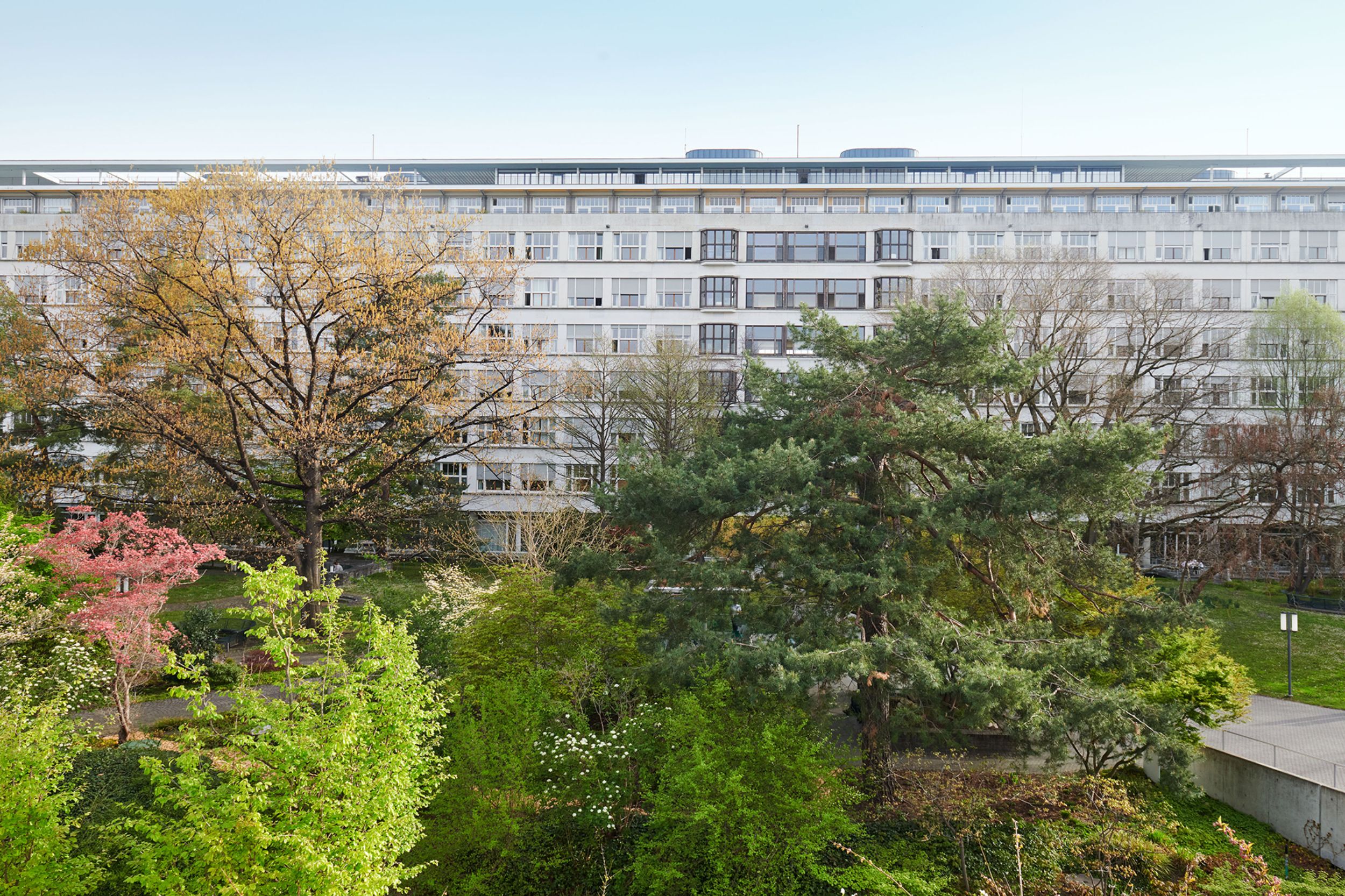
Project show Engineering and building technology
The project show uses selected examples to illustrate the diverse tasks and services of the Engineering department and the Energy and Building Technology department for the University Hospital Basel. It includes realized plans from the past ten years through to current projects.
Engineering
Electrochromic windows
Basel University Hospital is the first university hospital in Switzerland to replace the façade of the neonatology and recovery room West in Clinic 1 with electrochromic windows. The window panes can be darkened in four stages using a control panel. This eliminates the need for blinds.
One advantage of the electrochromic windows is that they provide thermal insulation in the summer months, allowing less solar radiation into the rooms and reducing the need for cooling. The darkened window panes also provide privacy from the outside.
Building and energy technology
Cooling the data center with groundwater
A groundwater well on the corner of Spitalstrasse and Wilhelm-His-Strasse that was no longer functional was replaced by a new well on behalf of the University Hospital Basel (USB).
The new groundwater well was constructed in July / August 2021 and put into operation on September 21, 2021. The installations are housed in an existing underground pipeline tunnel that is connected to the USB site. The extracted groundwater will be fed into the Rossetti building via this pipe network and used there to cool the data center. With this measure, the current cooling requirements of the data center (250 kW) can be fully covered by groundwater, which was previously supplied by a chiller.
Video of the emergency power test on April 23, 2021
After almost half a century, the emergency power generators at Basel University Hospital have been replaced by a complex system. On April 23, 2021, a large-scale exercise with up to 100 participants was carried out to test whether the emergency power supply system would function as intended in an emergency. We followed the first test of the new system with our cameras.
